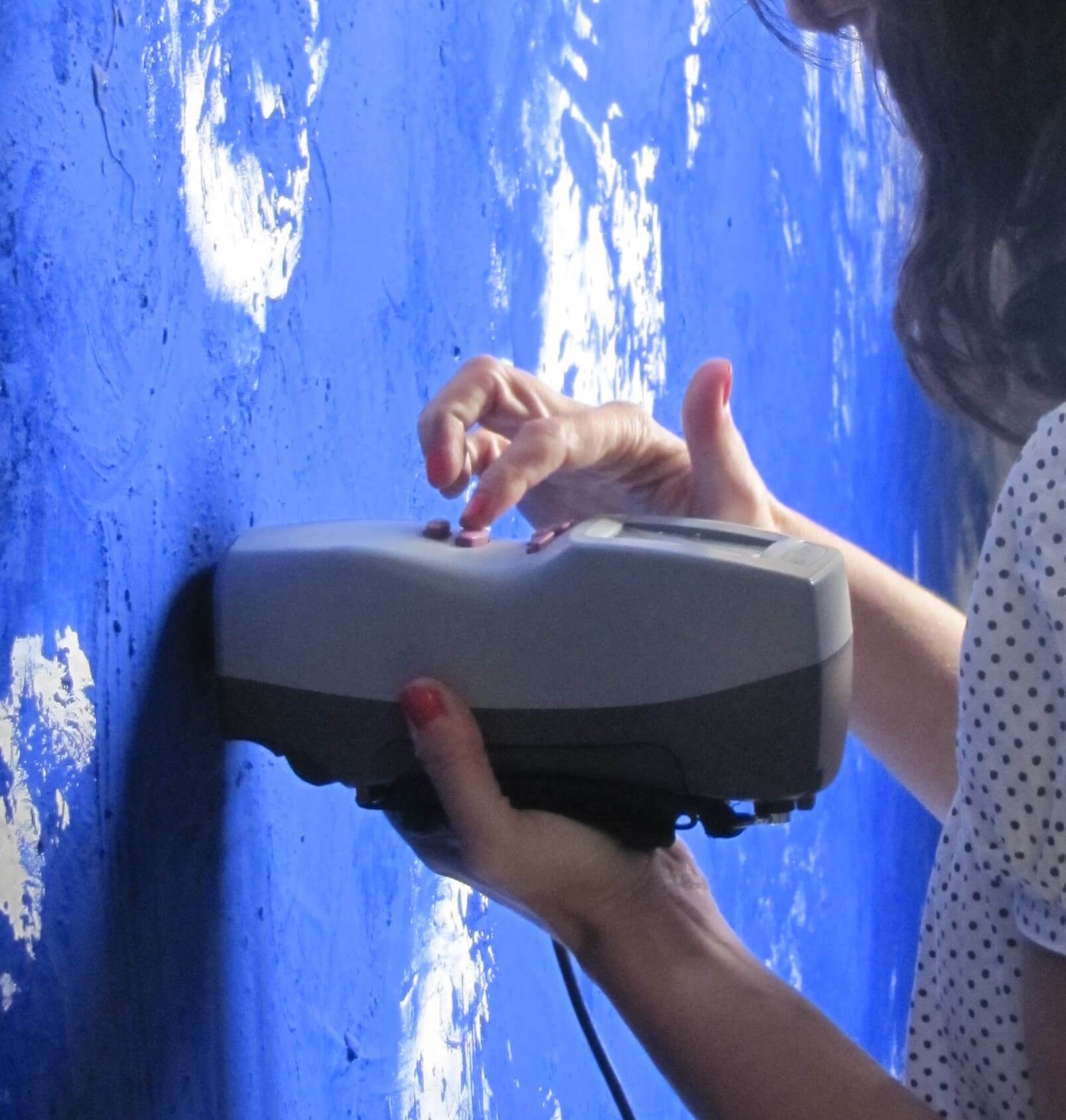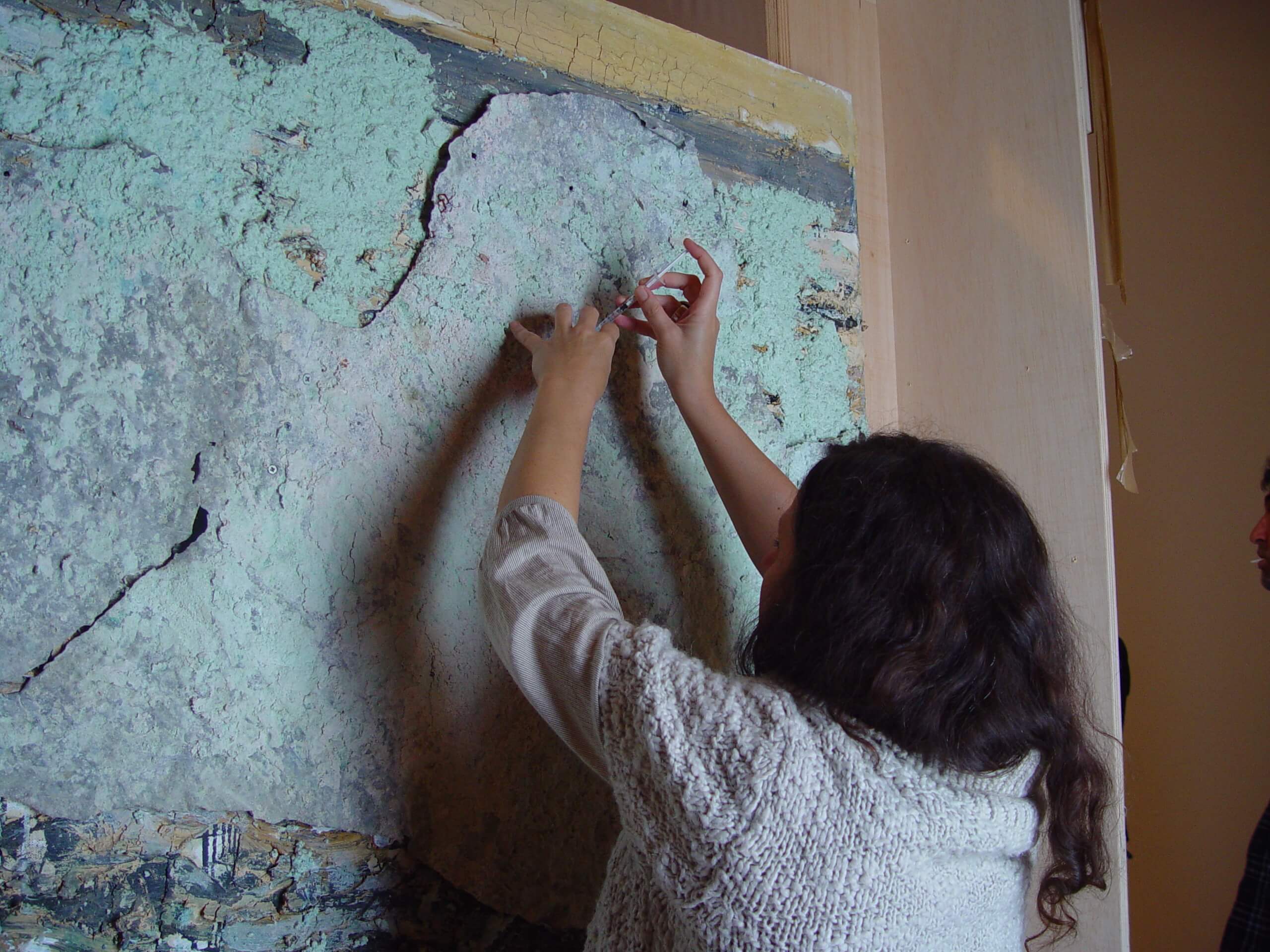
Special Conservation Project
On the occasion of the Museum’s 20th anniversary, fourteen works of art with technological components in the Guggenheim Museum Bilbao Collection will be upgraded as part of a special conservation project.
In the year of its 20th Anniversary, the Guggenheim Museum Bilbao has launched an ambitious conservation project involving fourteen works of art with technological components that are part of the Guggenheim Museum Bilbao Collection. Jenny Holzer’s Installation for Bilbao; Daniel Buren’s Red Arches; Juan Muñoz’s Shadow and Mouth; Jeff Koons’sPuppy; Fujiko Nakaya’s Fog Sculpture #08025 (F.O.G.); and Yves Klein’s Fire Fountain, are some of the works that will be carefully analyzed to determine the interventive conservation procedures that will be put in place for them to be enjoyed by future generations.
Starting in late 2016 and scheduled to finish in spring 2018, the project is led by the Museum’s Conservation Department, with the participation of professionals from different areas of the Museum in collaboration with the artists and their studios. The methodology employed responds to the concept of technology upgrade, which involves replacing the parts that are becoming obsolete or are not working properly—electric or electronic systems, hydraulic circuits, audiovisual equipment, and gas installations—by identical or similar elements while preserving the conceptual integrity of the artworks.
The whole process consists of three main phases: documentation, that is, gathering all descriptive information about each work and its conservation; analysis and intervention, which involves carrying out the interventive procedures required for ensuring the preservation of the pieces; and finally, prevention, which means designing and implementing an overall maintenance program for each work of art to minimize the probability of performance failure.
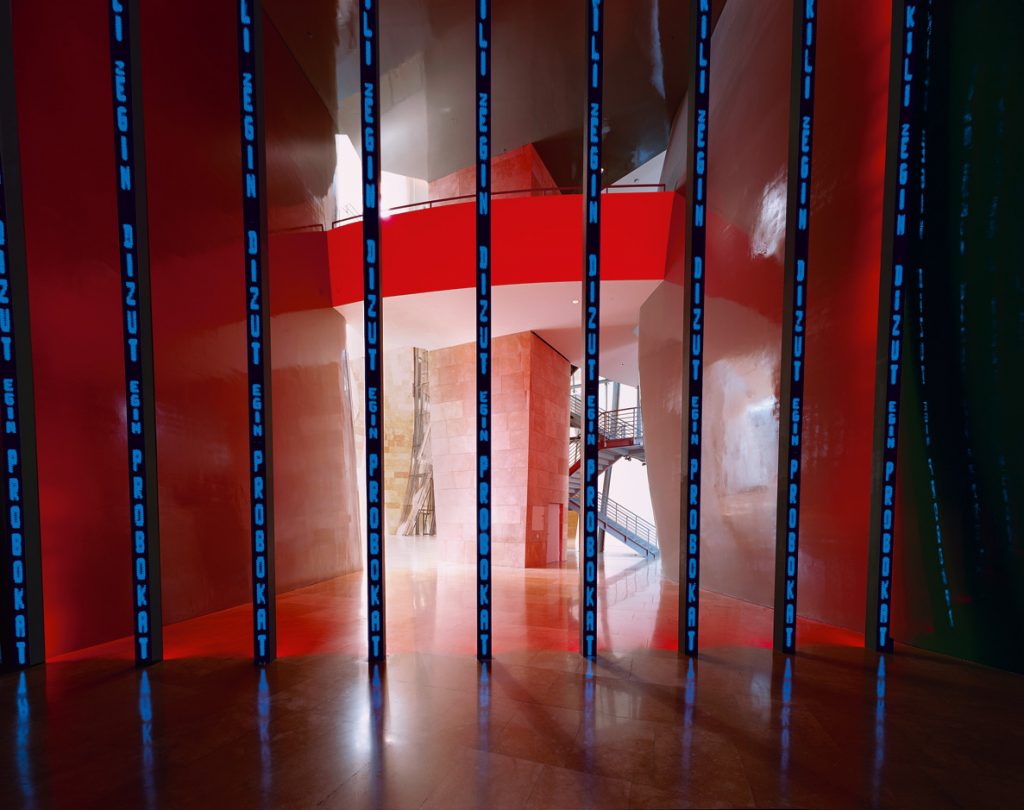
Instalación para Bilbao
Fourteen very different works
The fourteen works included in the project, nearly 10% of the Guggenheim Bilbao Museum Collection, fall into different typologies. Some of them are quite complex due to the kind of technological components they have. The project started off with one of the works with electronic systems: Installation for Bilbao, by Jenny Holzer. It comprises a row of nine columns on which texts written by the artist flow in streams of red and blue LED lights. After talking to Holzer and checking with her about her ideas for the conservation of the piece, a partial re-engineering of the work is taking place. Next-gen RGB LEDs, which provide brighter, richer colors and deliver greater energy efficiency, are replacing the original LED lights. Also, new hardware, software, and wiring are being installed.
Another work containing electronic systems to be updated is Daniel Buren’s Red Arches, a structure consisting of phenolic boards with a double (inner and outer) lighting system. In this case, the work’s surface and lighting will be fully renovated, maintaining the original remotely controlled lighting and motion sequence. Also in the electronic systems category is Shadow and Mouth, by Juan Muñoz, a piece featuring two human figures that seem to be talking to each other.
Among the pieces with hydraulic systems are Fog Sculpture #08025 (F.O.G.), by Fujiko Nakaya, consisting of nebulized water sprayed into the environment; and Puppy, Jeff Koons’s sculpture made of nearly 40,000 flowers and featuring an internal irrigation system with 114 outlets for the supply of water and the necessary phytosanitary products. Sergio Prego’s Sequence of Dihedrals, a sculptural-architectural intervention specifically conceived for one of the glass curtain-walls of the building, belongs to this typology as well. The piece comprises a number of aluminum panels that move with the help of a pneumatic compressor until they are perpendicular to the Museum’s glass curtain wall.
The main elements of the Collection’s video installations are sound and image files. Among the artworks to be renovated are Irrintzi, by Itziar Okariz, a video documenting a performance with no audience that the artist did inside the Museum; Disarmingly Cute, by Manu Arregui, comprised of two videos of Vanesa Jiménez, “the girl with glass bones,” facing each other and featuring the real girl and her virtual image; Too Late for Goya, by Francesc Torres, a piece including a sculpture on a rotating base and a reproduction of a print; and, Ikaraundi – EQDALOS (Head Kneeling Against the Wall), a multi-media installation by Iñaki Garmendia.
The group of works with electrical systems includes Liam Gillick’s How are you going to behave? A kitchen cat speaks, a large installation made of wood pieces, lamps, a stuffed cat, text, door blinds, and an MP3 player; Mona Hatoum’sHome, a table with illuminated metal appliances connected by live wires; and Christian Boltanski’s installation Humans, with photographs illuminated by a system of 112 dangling light bulbs.
The last in this conservation project is Yves Klein’s Fire Fountain, a work of art that belongs to the category of gas installations. Located in the pond between the Museum building and the river, this installation features five flames in line, operated with a gas combustion system.
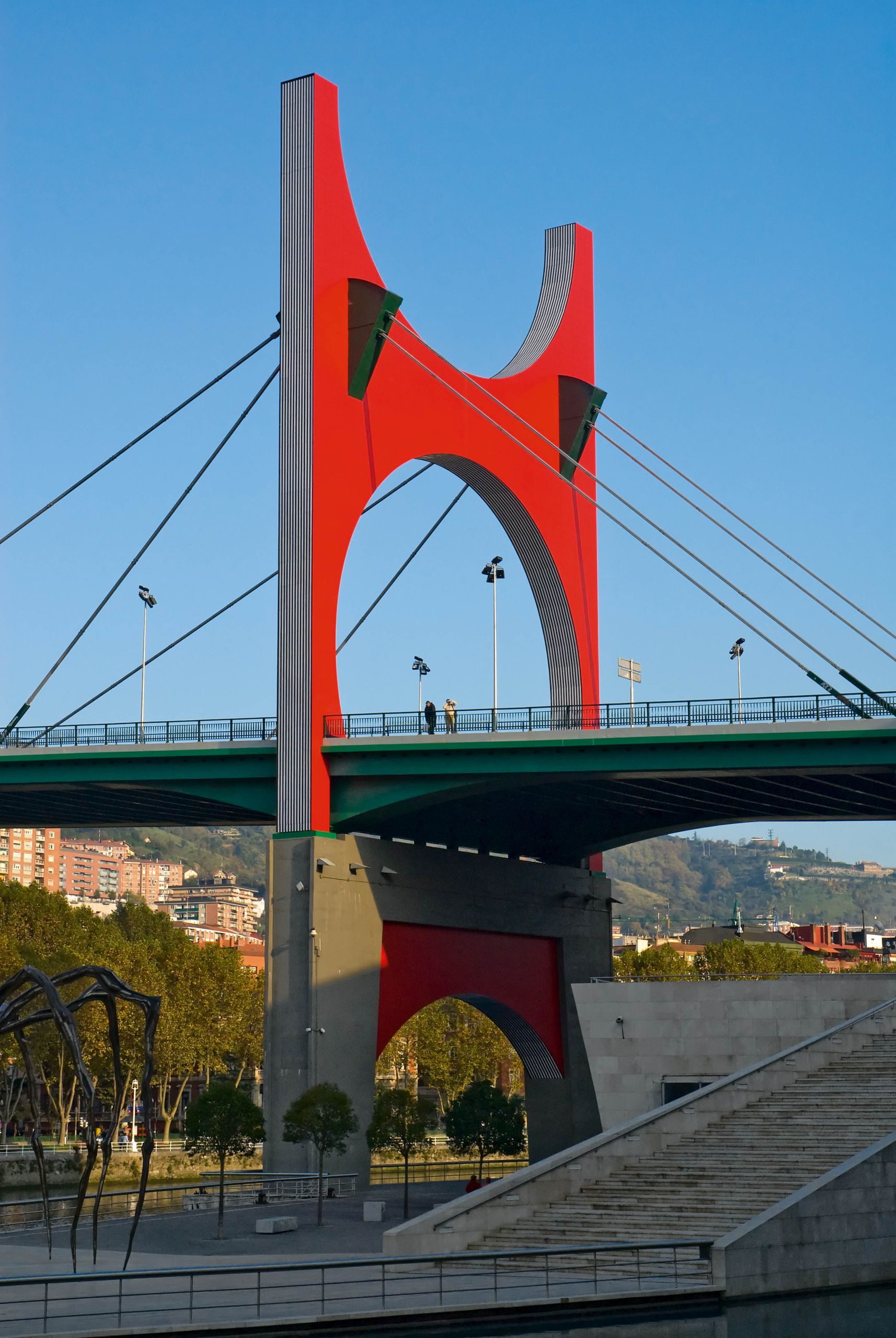
Arcos rojos / Arku gorriak
General lines of work
The Guggenheim Museum Bilbao Conservation Department works along two parallel lines:
Preventive conservation: risk analysis and establishment of appropriate artwork storage, handling, transport, and exhibition measures of art in order to guarantee that they are preserved correctly.
Study of the techniques and materials involved in the works, plus the causes and processes of their deterioration to set the necessary conservation measures and, when appropriate, plan treatments or more adequate actions.
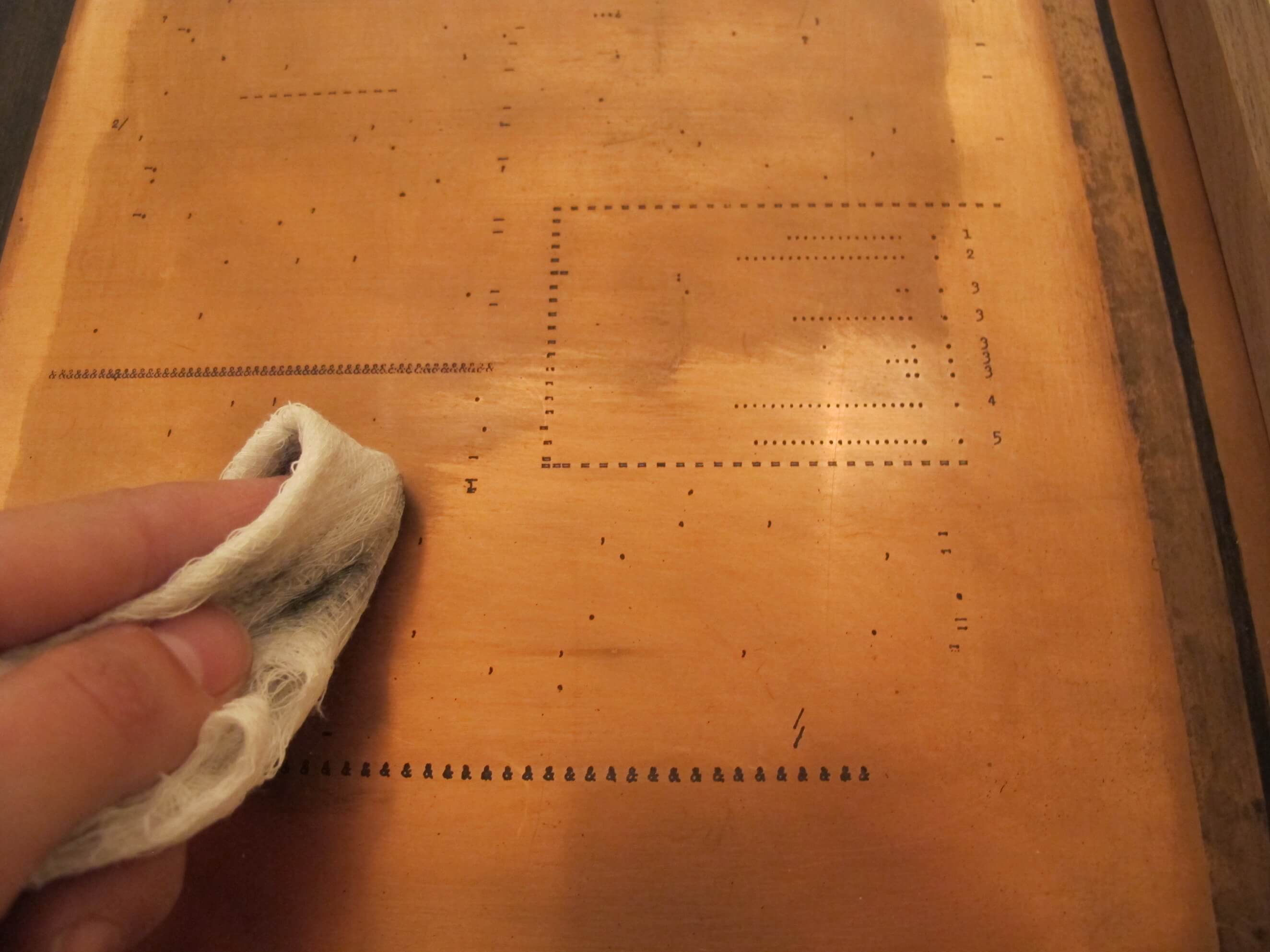
Research
Research, relating to both the field of preventive conservation and the Guggenheim Museum Bilbao collection, is one of the department’s fundamental activities.
In this respect, the museum has been participating in national and international research projects with other museums and institutions such as INCCA (International Network for the Conservation of Contemporary Art) (www.incca.org), a knowledge exchange platform for conservation of modern art.
The Conservation Department is also working on raising public awareness and active implication in preserving cultural heritage for future generations. They thereby take diverse collectives on guided tours, explaining their facilities and activities (university students, museum professionals, specialized public, etc.). The project A Hidden Picasso is the result of this awareness-raising work, clearly aiming to inform and educate.
Preventive conservation
This discipline of relatively recent introduction to museums has now become an essential part of all heritage conservation policies.
The Conservation Department manages and advocates a plan of comprehensive preventive conservation. Having first of all identified, discovered the characteristics of and evaluated the different risks threatening works, we establish the following:
- Prevention measures: ideal conditions of conservation, storage, handling, packaging, transport, exhibition and maintenance of works, taking different factors into account, such as ambient temperature, relative humidity, visible light radiation, UV light radiation, vibrations, knocks, plagues and pests, etc.
- Steps to be taken should any of these risks actually occur.
Within the context of preventive conservation, the Museum has developed and started up an Art Work Emergency Plan operating since 2003. To present it, the museum organized a specialized seminar on art work emergency plans in December 2007, “Emergency Plans for Museums. Working towards Full Preventive Conservation”.
Emergency plans for museums. Working towards full preventive conservation
There is growing interest in art work emergency plans among the museology community, providing one of the basic pillars of preventive conservation applied to museums and exhibition centers. The seminar featured the participation of internationally renowned experts who addressed the issue from different angles based on their own professional experience. A wide range of aspects was discussed, including the process of creating an emergency plan (risk detection and assessment, implementation of prevention systems, recovery plans, etc.), technical and economic viability, and awareness and personnel training. The presentations provided a comprehensive view of the situation, identifying the various emergency management models in place today in museums both in Spain and around the world.
Conservation of The Guggenheim Museum Bilbao Collection
Each work in the Guggenheim Museum Bilbao Collection is exhaustively studied to identify its technical and material characteristics, establish its state of conservation and design the appropriate strategy for guaranteeing its preservation.
We also define specific instructions for the storage, handling, transport, exhibition and maintenance of each work. Sometimes, when required by the technical and material characteristics of certain works, employees from the Conservation Department coordinate interdisciplinary teams made up of professionals from other areas to complete exhaustive research.
At others, specific conservation and/or restoration work is carried out on works belonging to the Guggenheim Museum Bilbao Collection.
Thanks to the importance of the studies and processes carried out on works belonging to the Guggenheim Museum Bilbao Collection, and their usefulness for other professionals, the Museum actively participates in differentnational and international professional forums, presenting its results in the shape of papers and scientific articles.
